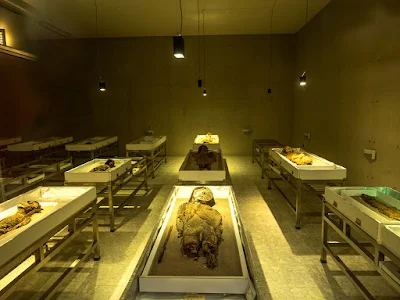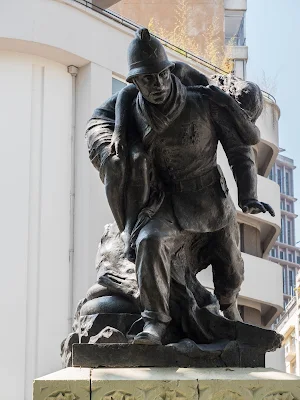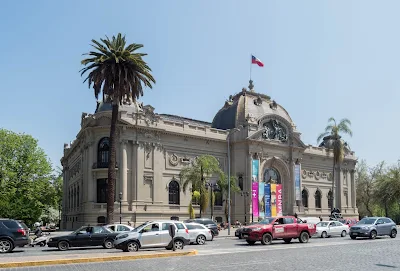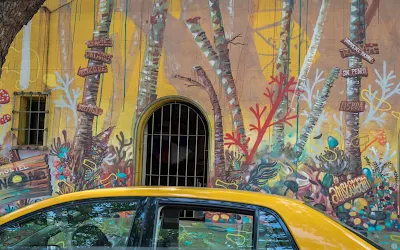Wednesday, 25 October 2017
Tuesday, 17 October 2017
Arica Chile - the most northern city
Tuesday 17 October 2017
Arica is a Chilean port city and the northern gateway to Peru and Bolivia known for its surfing beaches. Near the center, a path climbs up to Morro Arica hill, which offers sweeping views and access to the Museo Histórico y de Armas war museum. The city has a cathodic church, St. Mark's Cathedral (Catedral de San Marcos) which is also called Arica Cathedral. The building was commissioned by the government of Peruvian (President José Balta) to the workshops of the French Gustave Eiffel and was originally intended for the Ancon resort. It was built at the request of a committee of ladies of Arica on the site of the old Mother Church of Arica that was destroyed by an earthquake in 1868 and inaugurated in 1876.It was constructed in France and frenchmen were brought to Chile to erect the construction. It is designed to withstand earthquakes. In 1889 Gustave Eiffel built the Eiffel tower.
In 1880, the city of Arica became militarily occupied by the Chilean army, however, until the early twentieth century, the parish of Arica remained part of the diocese of Arequipa the colonial-era capital of Peru’s Arequipa Regio Peru). On 27 February 1910 the mayor of Arica, Maximo Lira, decreed the expulsion of Juan Vitaliano Berroa, parish priest of Arica and replaced him with a Chilean military chaplain.
The high plains of the Andes mountains rise to the east, home to Lauca National Park and Chungará Lake. Chungará Lake is the main attraction in this wilderness park surrounded by volcanoes and adjacent to the border with Bolivia. Putre and Parque Nacional LaucaParque Lauca is one of those special places in Chile.
The school children wear uniforms and business dress here still means suits and ties.
The area grows a lot of tomatoes and they are protected by brown tented screens. Cars are imported second hand from Japan as the Japanese do not use cars more than a few years old however they have to be converted to right-hand drive by law. Often one can see the Japanese licensing stickers still on the car bodies. Wrecks on the roads are not salvaged or removed so often one can see cars and lorries remains down the side of lava field mountains. It was a surprise to find Pelicans and sea lions in the fishing harbour. I have never seen a Pelicon let alone close-up.
There is a museum with mummies which is quite impressive. There are four types of artificial mummification back, red, bandaged and clay. One of the mummies was a naturally mummified by the dry salty environment, it was a Chinese man who had been working. All the figures were very small and some were children even foetus' were mumified.


Arica is a Chilean port city and the northern gateway to Peru and Bolivia known for its surfing beaches. Near the center, a path climbs up to Morro Arica hill, which offers sweeping views and access to the Museo Histórico y de Armas war museum. The city has a cathodic church, St. Mark's Cathedral (Catedral de San Marcos) which is also called Arica Cathedral. The building was commissioned by the government of Peruvian (President José Balta) to the workshops of the French Gustave Eiffel and was originally intended for the Ancon resort. It was built at the request of a committee of ladies of Arica on the site of the old Mother Church of Arica that was destroyed by an earthquake in 1868 and inaugurated in 1876.It was constructed in France and frenchmen were brought to Chile to erect the construction. It is designed to withstand earthquakes. In 1889 Gustave Eiffel built the Eiffel tower.
In 1880, the city of Arica became militarily occupied by the Chilean army, however, until the early twentieth century, the parish of Arica remained part of the diocese of Arequipa the colonial-era capital of Peru’s Arequipa Regio Peru). On 27 February 1910 the mayor of Arica, Maximo Lira, decreed the expulsion of Juan Vitaliano Berroa, parish priest of Arica and replaced him with a Chilean military chaplain.
The high plains of the Andes mountains rise to the east, home to Lauca National Park and Chungará Lake. Chungará Lake is the main attraction in this wilderness park surrounded by volcanoes and adjacent to the border with Bolivia. Putre and Parque Nacional LaucaParque Lauca is one of those special places in Chile.
The school children wear uniforms and business dress here still means suits and ties.
The area grows a lot of tomatoes and they are protected by brown tented screens. Cars are imported second hand from Japan as the Japanese do not use cars more than a few years old however they have to be converted to right-hand drive by law. Often one can see the Japanese licensing stickers still on the car bodies. Wrecks on the roads are not salvaged or removed so often one can see cars and lorries remains down the side of lava field mountains. It was a surprise to find Pelicans and sea lions in the fishing harbour. I have never seen a Pelicon let alone close-up.
There is a museum with mummies which is quite impressive. There are four types of artificial mummification back, red, bandaged and clay. One of the mummies was a naturally mummified by the dry salty environment, it was a Chinese man who had been working. All the figures were very small and some were children even foetus' were mumified.


Monday, 16 October 2017
A city walk in Santiago
We decided a walking tour using the GPS City Walk app first taking a lefty car downtown. As I left the hotel the concierge told to put my camera away and be careful. This happened again in "pick pocket" Plaza de Armas square when a well dressed man came up to me and told me to be careful. We did not see another person with an SLR however as for iPhones and iPads - yes plenty of those. It was Monday so the Galleries and Museums were closed as they are in Europe. The Fine Art Gallery had been covered with graffiti and several men dressed in overalls were busy painting over it. Now being aware that I must be careful I took "holiday snaps" only to find all sorts of happenings when I came to download the pictures. I did not purposely photography some of these going ons. "A young person was examining the genitalia of a horse statue". I certainly did not risk waiting for someone to walk by graffiti as is done in Brick Lane I stood out for sure being taller than most and with blond hair, not a chance I could blend in. I did see a sign asking for information for a missing man. There must be a story there. The Santiago Metropolitan Catholic Cathedral in Plaza de Armas is the seat of the current Ricardo Ezzati Andrello and the centre of the archdiocese of Santiao de Chile. `previous cathedrals have been destroyed by earthquakes. The neoclassical construction was the design of the Italian architect Joaquin Toesca.






 |
| electricity cables are very prominent |
Subscribe to:
Comments (Atom)


























































